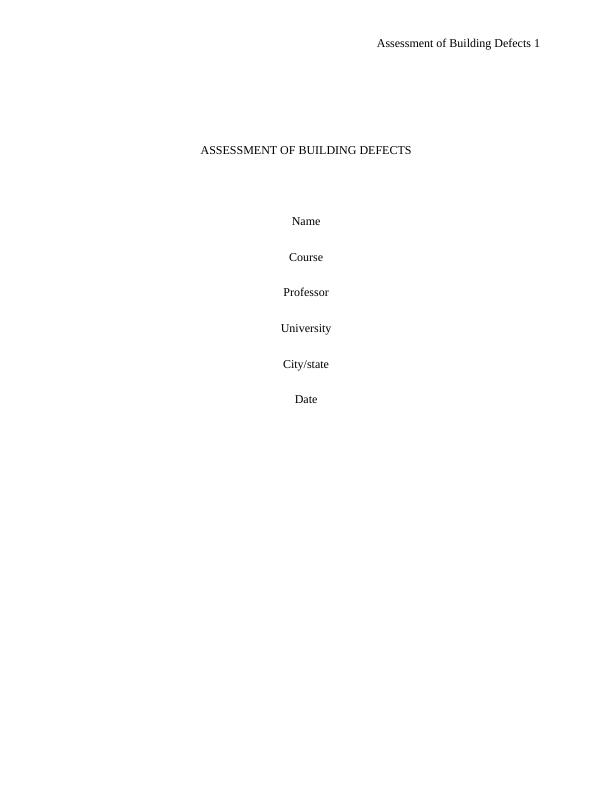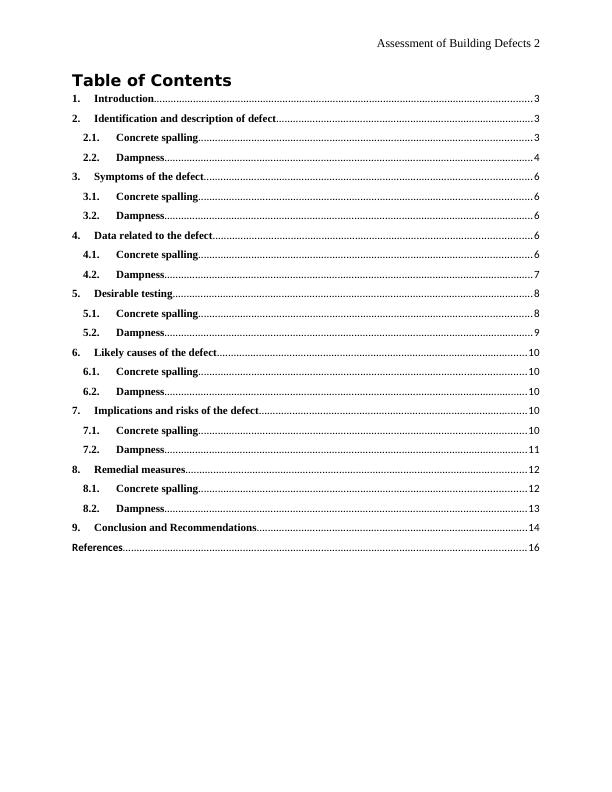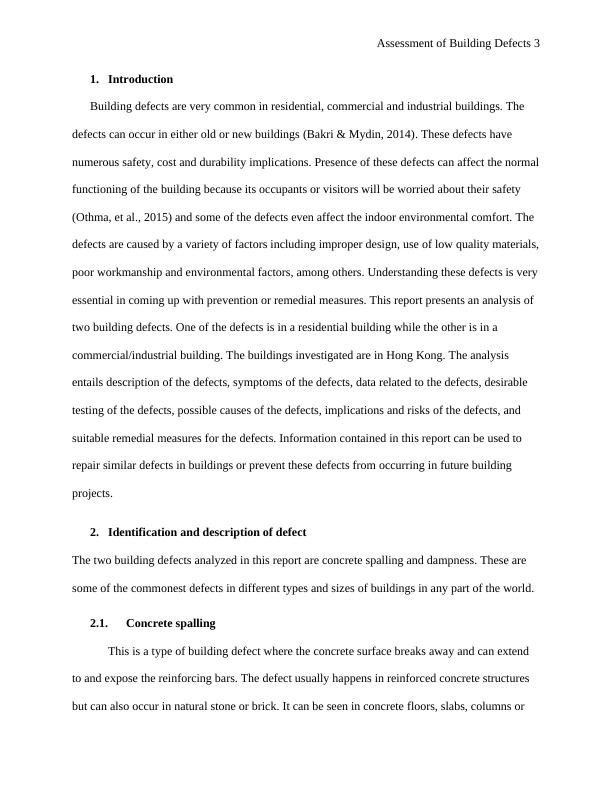Assessment of Building Defects
Evaluate and analyze building defects in two buildings from different periods.
17 Pages4418 Words59 Views
Added on 2023-04-21
About This Document
This report presents an analysis of two building defects - concrete spalling and dampness. It includes identification and description of the defects, symptoms, data related to the defects, desirable testing, likely causes, implications, and remedial measures. The information can be used to repair similar defects or prevent them in future building projects.
Assessment of Building Defects
Evaluate and analyze building defects in two buildings from different periods.
Added on 2023-04-21
ShareRelated Documents
End of preview
Want to access all the pages? Upload your documents or become a member.
Material Defect Report: Spalling Concrete in Construction
|10
|2054
|343
Building Pathology and Inspection of Building Construction
|21
|3472
|347
Premature decay and failure of building materials: a condition report
|15
|3952
|209
1. INTRODUCTION........................................
|30
|6155
|223
Apply Structural Principles to Residential Low-Rise Constructions
|21
|3688
|412
Pressure ulcers in the skin
|19
|3959
|162




